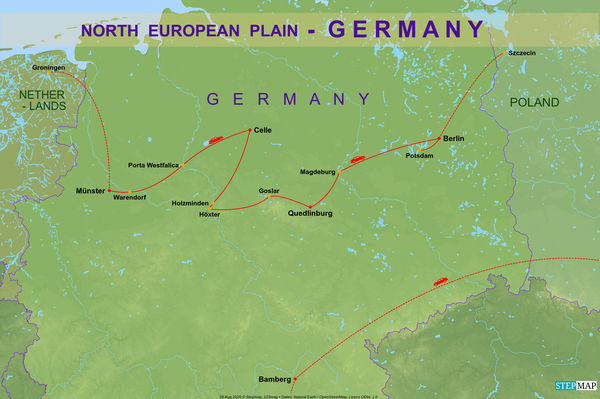North European Plain 25 - Germany/Quedlinburg 1 - Castle & grounds
May 13, 2021 10:46:22 #
We have arrived! - at one of the absolute highlights of our drive. The beautiful half-timbered buildings in Celle, the intriguing rosette decorations in Höxter and the old charm of Goslar were mere warm-up exercises for the splendor and overwhelming abundance that is QUEDLINBURG. Here they count these ancient buildings not in the dozens or hundreds, instead some 2000 of these structures from six centuries dot the center of the city and are lorded over by a massive castle and church combination on the appropriately named castle hill. Again, our friends at Wikipedia have the word (slightly abridged by me):
HISTORY
The town of Quedlinburg is known to have existed since at least the early 9th century, when there was a settlement known as "Gross Orden" on the eastern bank of the River Bode. It was first mentioned as a town in 922 as part of a donation by King Henry the Fowler (Heinrich der Vogler). According to legend, Henry had been offered the German crown at Quedlinburg in 919 by Franconian nobles, giving rise to the town being called the "Cradle of the German Reich". After Henry's death in 936, his widow Saint Matilda founded a religious community for women (Frauenstift) on the castle hill, where daughters of the higher nobility were educated. The main task of this collegiate foundation, Quedlinburg Abbey, was to pray for the memory of King Henry and the rulers who came after him. The Annals of Quedlinburg were also compiled there. The first abbess was Matilda, a granddaughter of King Henry and St. Matilda. The Quedlinburg castle complex, founded by King Henry I and built up by Emperor Otto I in 936, was an imperial Pfalz of the Saxon emperors. The Pfalz, including the male convent, was in the valley, where today the Roman Catholic Church of St. Wiperti is situated, while the women's convent was located on the castle hill. In 973, shortly before the death of Emperor Otto I, a Reichstag (Imperial Convention) was held at the imperial court in which Mieszko, duke of Polans, and Boleslav, duke of Bohemia, as well as numerous other nobles from as far away as Byzantium and Bulgaria, gathered to pay homage to the emperor. On the occasion, Otto the Great introduced his new daughter-in-law Theophanu, a Byzantine princess whose marriage to Otto II brought hope for recognition and continued peace between the rulers of the Eastern and Western empires.
In 994, Otto III granted to the town the right of market, tax, and coining, and established the first market place to the north of the castle hill. The town became a member of the Hanseatic League in 1426. Quedlinburg Abbey frequently disputed the independence of the town, which sought the aid of the Bishopric of Halberstadt. In 1477, Abbess Hedwig, aided by her brothers Ernest and Albert, broke the resistance of the town and expelled the bishop's forces. Quedlinburg was forced to leave the Hanseatic League and was subsequently protected by the Electorate of Saxony. Both town and abbey converted to Lutheranism in 1539 during the Protestant Reformation. In 1697, Elector Frederick Augustus I of Saxony sold his rights to Quedlinburg to Elector Frederick III of Brandenburg for 240,000 thalers. However, Quedlinburg Abbey contested Brandenburg-Prussia's claims throughout the 18th century. The abbey was secularized in 1802 during the German Mediatisation, and Quedlinburg passed to the Kingdom of Prussia as part of the Principality of Quedlinburg. Part of the Napoleonic Kingdom of Westphalia from 1807–13, it was included within the new Prussian Province of Saxony in 1815. In all this time, ladies ruled Quedlinburg as abbesses without "taking the veil"; they were free to marry. The last of these ladies was a Swedish princess, an early fighter for women's rights, Sofia Albertina.
During the Nazi regime, the memory of Henry I became a sort of cult, as Heinrich Himmler saw himself as the reincarnation of the "most German of all German" rulers. The collegiate church and castle were to be turned into a shrine for Nazi Germany. The Nazi Party tried to create a new religion. The cathedral was closed from 1938 and during the war. The local crematory was kept busy burning the victims of the Langenstein-Zwieberge concentration camp. Liberation in 1945 brought back the Protestant bishop and the church bells, and the Nazi-style eagle was taken down from the tower. During the last months of World War II, the United States military had occupied Quedlinburg. In the 1980s, upon the death of one of the US military men, the theft of the treasure of the church, containing ancient Christian religious artifacts and books from Quedlinburg came to light. It was brought back to Quedlinburg in 1993 and is again on display here. Quedlinburg was administered within the Bezirk Halle while part of the Communist East Germany from 1949 to 1990. It became part of the state of Saxony-Anhalt upon German reunification in 1990. During Quedlinburg's Communist era, restoration specialists from Poland were called in during the 1980s to carry out repairs on the old architecture. Today, Quedlinburg is a center of restoration of Fachwerk (half-timbered) houses.
ATTRACTIONS
In the center of the town are a wide selection of half-timbered buildings from at least five different centuries (including a 14th-century structure, one of Germany's oldest), while around the outer fringes of the old town are examples of Jugendstil buildings, dating from the late 19th and early 20th centuries. The old town of Quedlinburg belongs to the largest in Germany with a size of around 90 hectares. 2000 half-timbered houses can be found here. The oldest, the "Ständerbau", dates back from 1347. Another famous building is called "Klopstockhaus", the birthplace of poet Friedrich Gottlieb Klopstock. Since December 1994, the old town of Quedlinburg and the castle mount with the Stiftskirche (collegiate church) are listed as one of UNESCO's World Heritage Sites. Quedlinburg is one of the best-preserved medieval and Renaissance towns in Europe, having escaped major damage in World War II. The castle and Stiftskirche St. Servatius still dominate the town like in the early Middle Ages. The church is a prime example of German Romanesque style.
--------------------------------------------------------------------------------------------------------------------------------
I will be presenting 8 posts covering Quedlinburg. This set covers the external views of the castle, church and the castle garden atop the castle hill.
Notes
TRIP INFO: Set # 1 provides a brief introduction, maps and information for the entire series. Find it at:
https://www.uglyhedgehog.com/t-693834-1.html
EARLIER POSTS of this series: Access my topic list, the new posts are listed in reverse chronological order:
https://www.uglyhedgehog.com/user-topic-list?usernum=45105
Thank you for visiting, I recommend viewing the downloads and look forward to your comments and questions.
.
HISTORY
The town of Quedlinburg is known to have existed since at least the early 9th century, when there was a settlement known as "Gross Orden" on the eastern bank of the River Bode. It was first mentioned as a town in 922 as part of a donation by King Henry the Fowler (Heinrich der Vogler). According to legend, Henry had been offered the German crown at Quedlinburg in 919 by Franconian nobles, giving rise to the town being called the "Cradle of the German Reich". After Henry's death in 936, his widow Saint Matilda founded a religious community for women (Frauenstift) on the castle hill, where daughters of the higher nobility were educated. The main task of this collegiate foundation, Quedlinburg Abbey, was to pray for the memory of King Henry and the rulers who came after him. The Annals of Quedlinburg were also compiled there. The first abbess was Matilda, a granddaughter of King Henry and St. Matilda. The Quedlinburg castle complex, founded by King Henry I and built up by Emperor Otto I in 936, was an imperial Pfalz of the Saxon emperors. The Pfalz, including the male convent, was in the valley, where today the Roman Catholic Church of St. Wiperti is situated, while the women's convent was located on the castle hill. In 973, shortly before the death of Emperor Otto I, a Reichstag (Imperial Convention) was held at the imperial court in which Mieszko, duke of Polans, and Boleslav, duke of Bohemia, as well as numerous other nobles from as far away as Byzantium and Bulgaria, gathered to pay homage to the emperor. On the occasion, Otto the Great introduced his new daughter-in-law Theophanu, a Byzantine princess whose marriage to Otto II brought hope for recognition and continued peace between the rulers of the Eastern and Western empires.
In 994, Otto III granted to the town the right of market, tax, and coining, and established the first market place to the north of the castle hill. The town became a member of the Hanseatic League in 1426. Quedlinburg Abbey frequently disputed the independence of the town, which sought the aid of the Bishopric of Halberstadt. In 1477, Abbess Hedwig, aided by her brothers Ernest and Albert, broke the resistance of the town and expelled the bishop's forces. Quedlinburg was forced to leave the Hanseatic League and was subsequently protected by the Electorate of Saxony. Both town and abbey converted to Lutheranism in 1539 during the Protestant Reformation. In 1697, Elector Frederick Augustus I of Saxony sold his rights to Quedlinburg to Elector Frederick III of Brandenburg for 240,000 thalers. However, Quedlinburg Abbey contested Brandenburg-Prussia's claims throughout the 18th century. The abbey was secularized in 1802 during the German Mediatisation, and Quedlinburg passed to the Kingdom of Prussia as part of the Principality of Quedlinburg. Part of the Napoleonic Kingdom of Westphalia from 1807–13, it was included within the new Prussian Province of Saxony in 1815. In all this time, ladies ruled Quedlinburg as abbesses without "taking the veil"; they were free to marry. The last of these ladies was a Swedish princess, an early fighter for women's rights, Sofia Albertina.
During the Nazi regime, the memory of Henry I became a sort of cult, as Heinrich Himmler saw himself as the reincarnation of the "most German of all German" rulers. The collegiate church and castle were to be turned into a shrine for Nazi Germany. The Nazi Party tried to create a new religion. The cathedral was closed from 1938 and during the war. The local crematory was kept busy burning the victims of the Langenstein-Zwieberge concentration camp. Liberation in 1945 brought back the Protestant bishop and the church bells, and the Nazi-style eagle was taken down from the tower. During the last months of World War II, the United States military had occupied Quedlinburg. In the 1980s, upon the death of one of the US military men, the theft of the treasure of the church, containing ancient Christian religious artifacts and books from Quedlinburg came to light. It was brought back to Quedlinburg in 1993 and is again on display here. Quedlinburg was administered within the Bezirk Halle while part of the Communist East Germany from 1949 to 1990. It became part of the state of Saxony-Anhalt upon German reunification in 1990. During Quedlinburg's Communist era, restoration specialists from Poland were called in during the 1980s to carry out repairs on the old architecture. Today, Quedlinburg is a center of restoration of Fachwerk (half-timbered) houses.
ATTRACTIONS
In the center of the town are a wide selection of half-timbered buildings from at least five different centuries (including a 14th-century structure, one of Germany's oldest), while around the outer fringes of the old town are examples of Jugendstil buildings, dating from the late 19th and early 20th centuries. The old town of Quedlinburg belongs to the largest in Germany with a size of around 90 hectares. 2000 half-timbered houses can be found here. The oldest, the "Ständerbau", dates back from 1347. Another famous building is called "Klopstockhaus", the birthplace of poet Friedrich Gottlieb Klopstock. Since December 1994, the old town of Quedlinburg and the castle mount with the Stiftskirche (collegiate church) are listed as one of UNESCO's World Heritage Sites. Quedlinburg is one of the best-preserved medieval and Renaissance towns in Europe, having escaped major damage in World War II. The castle and Stiftskirche St. Servatius still dominate the town like in the early Middle Ages. The church is a prime example of German Romanesque style.
--------------------------------------------------------------------------------------------------------------------------------
I will be presenting 8 posts covering Quedlinburg. This set covers the external views of the castle, church and the castle garden atop the castle hill.
Notes
TRIP INFO: Set # 1 provides a brief introduction, maps and information for the entire series. Find it at:
https://www.uglyhedgehog.com/t-693834-1.html
EARLIER POSTS of this series: Access my topic list, the new posts are listed in reverse chronological order:
https://www.uglyhedgehog.com/user-topic-list?usernum=45105
Thank you for visiting, I recommend viewing the downloads and look forward to your comments and questions.
.
1 - Intro to Quedlinburg on the background of the market square looking north
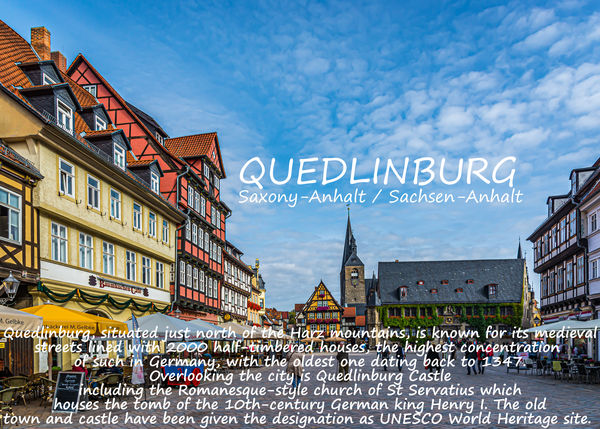
(Download)
2 - Castle Garden (Schlossgarten) with the St Servatius church at left and the Schlosskurg Inn at right
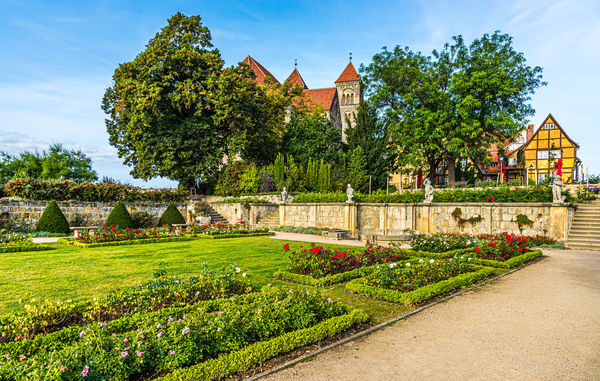
(Download)
3 - Castle Garden with the spires of the St Blasii church at the distance
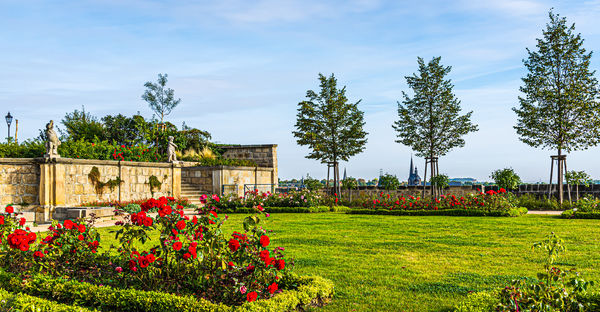
(Download)
4 - Castle Garden with the St Servatius church
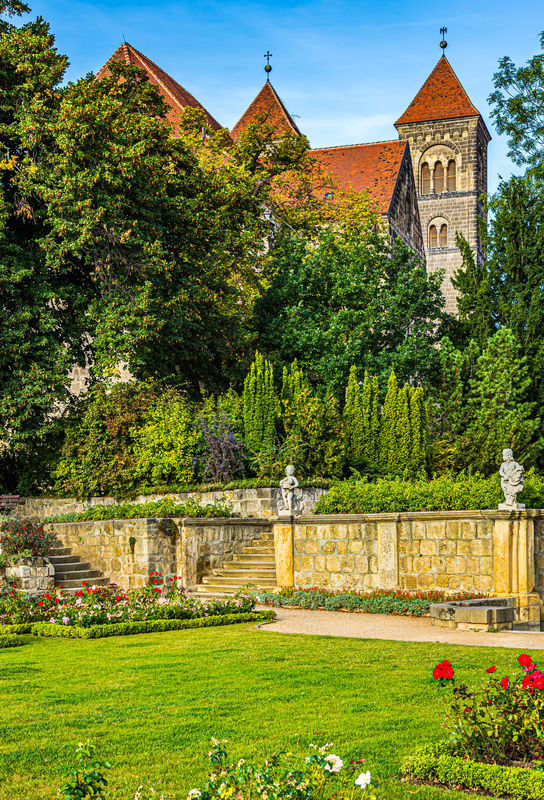
(Download)
5 - Castle Garden with the Schlosskrug Inn
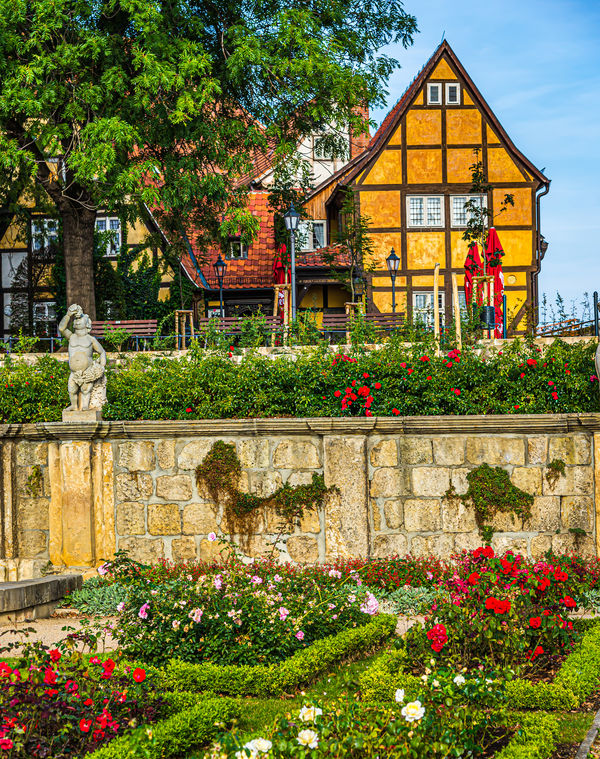
(Download)
6 - St Servatius church (Stiftskirche) built 1129 at left and Quedlinburg castle at right, built in the 10th century, now housing the castle museum
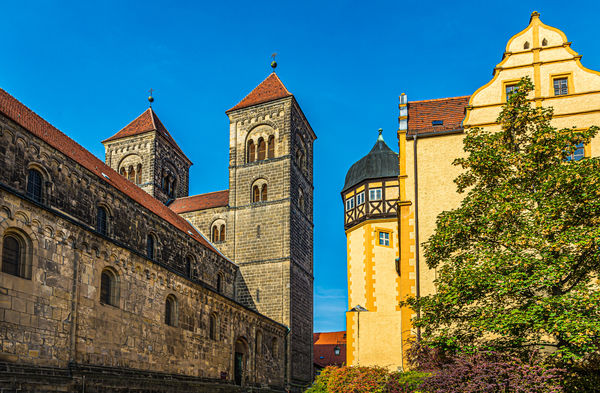
(Download)
7 - St. Servatius church (1129) seen from castle garden
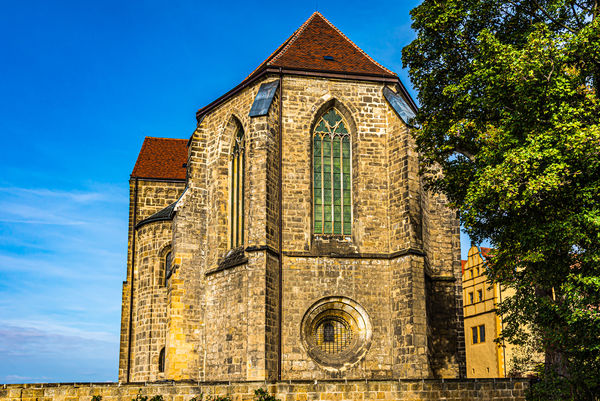
(Download)
8 - St. Servatius church seen from castle garden
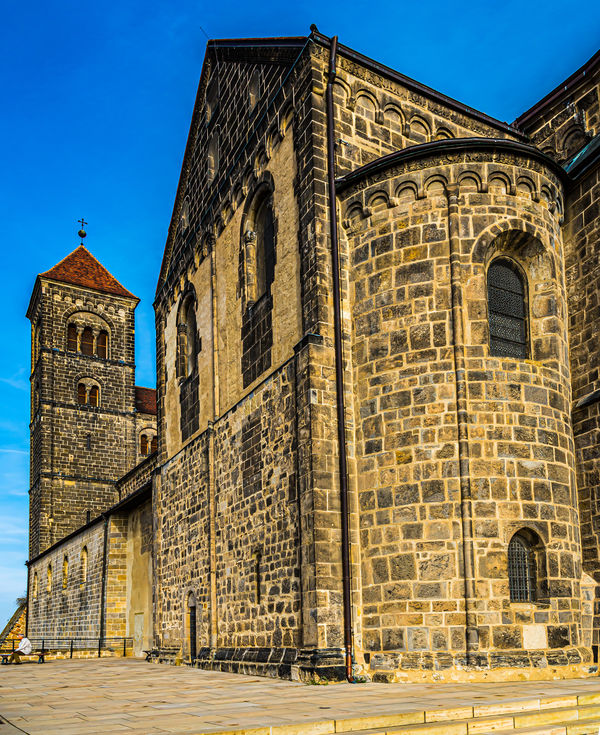
(Download)
9 - Quedlinburg castle (10c), now housing the castle museum (Schlossmuseum)
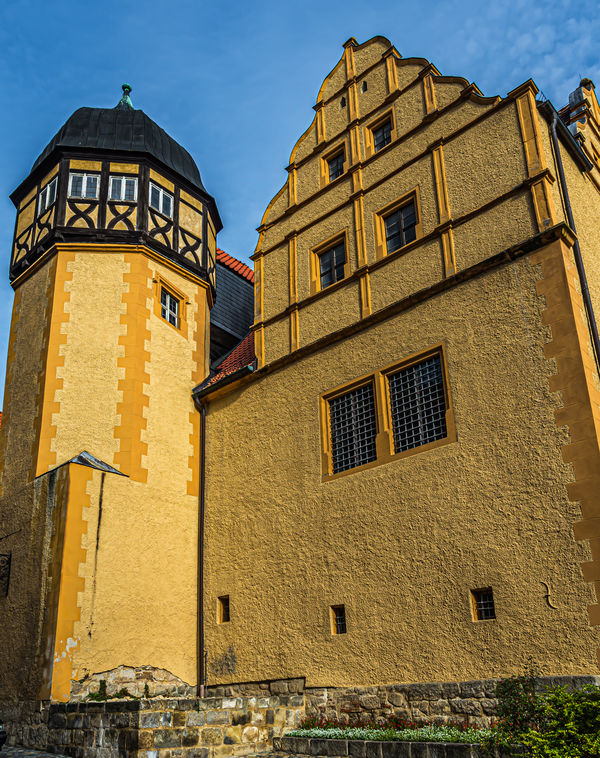
(Download)
10 - Schlosskrug Inn on the castle grounds
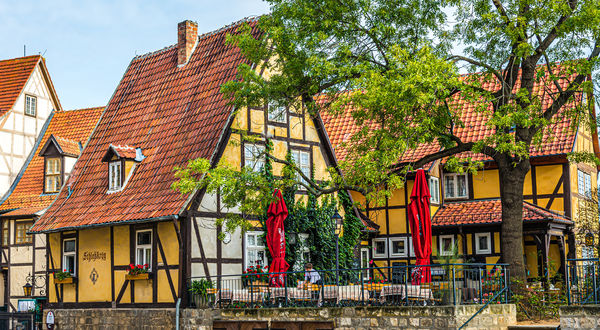
(Download)
May 13, 2021 10:47:30 #
May 13, 2021 11:15:53 #
May 13, 2021 11:16:37 #
May 13, 2021 11:25:20 #
May 13, 2021 11:28:37 #
Longshadow wrote:
Wow, amazing architecture back then.
Thank you Bill, they sure knew how to construct massive buildings back then.
May 13, 2021 11:29:59 #
angler wrote:
A superb set Joe.
Thank you Jim for your kind comment, glad you like this set.
May 13, 2021 11:31:35 #
kpmac wrote:
You always manage to make me want to return to Europe. Beautiful set, Joe.
It is still there Ken, waiting for you and hopefully we can start make it happen soon again - I am tentatively going to start booking today my next trip to over there!
May 13, 2021 11:55:02 #
May 13, 2021 12:13:21 #
Another super set. I could very easily see us sitting at the Schlosskrug Inn tables.
May 13, 2021 12:28:44 #
May 13, 2021 13:09:23 #
NMGal wrote:
The gardens are beautiful and the buildings sure have a sense of history.
Thank you Barbara, I am glad you like the gardens and buildings in this set.
May 13, 2021 13:10:16 #
RichardTaylor wrote:
Another super set. I could very easily see us sitting at the Schlosskrug Inn tables.
Thank you Richard for your kind comment - maybe you should head back there once more and relive the experience again!
May 13, 2021 13:10:57 #
UTMike wrote:
Another beautiful set, Joe!
Thank you Mike, we really did like Quedlinburg!
May 13, 2021 18:00:17 #
weberwest wrote:
We have arrived! - at one of the absolute highligh... (show quote)
Amazing shots🥇🥇🥇🥇🥇
If you want to reply, then register here. Registration is free and your account is created instantly, so you can post right away.

